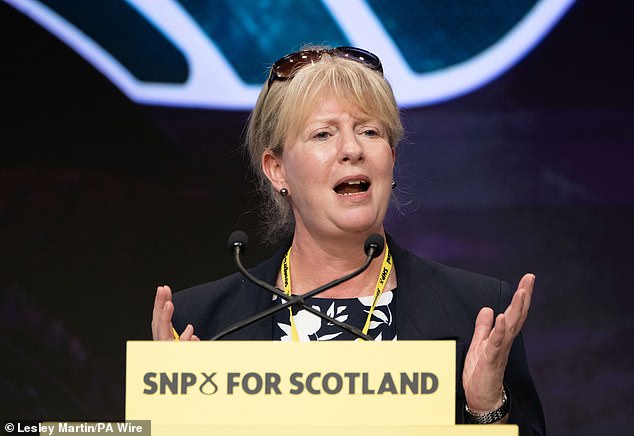
Scotland is living beyond its means. It’s a harsh reality most politicians would rather not talk about, but avoidance of the truth does not make it any less truthful.
The Scottish Government’s medium-term financial strategy, recently published, does not avoid the subject entirely but it sugar-coats the problem to such an extent that a sickly sweet aftertaste is left behind.
If you want the sugar-free version – bitter but at least honest – you could do worse than new analysis from the Institute for Public Policy Research (IPPR).
Its paper, ‘Filling the Funding Gap’, makes for a bracing read, but since it’s summer and people are too busy having lives to take a deep-dive into think-tank fiscal wonkery, allow me to summarise: the Scottish Government is spending your money like a drunken sailor at an establishment of ill-repute.
We’re not talking about a couple of quid here and there. Within the next four years, the deficit between what Holyrood raises and what it spends will hit £2.6billion.
However, this is not just a story of profligacy, it’s one of consequences too. Holyrood is required to balance its budget every year: that gap will have to be plugged. £2.6billion will have to be found from somewhere.
The IPPR paper is not a cheery beach read. It’s more like a blood-curdling horror story.
Take the Scottish Government’s strategy, in particular the claim that we’re a ‘high growth country’, which the IPPR says ‘might be generously described as optimistic’.

Finance Secretary Shona Robison is struggling to balance the country’s budget
That’s economist-speak for ‘up there with leaving a molar under your pillow for the Tooth Fairy as a financial strategy’.
The source of the problem is a public sector that does too much, costs too much, and is too hard to reform.
As another independent think tank, the Fraser of Allander Institute, points out, public sector pay accounts for 55 per cent of Holyrood’s resource spending.
This is unsustainable. Either the public finances will have to be put in order or we are heading for economic calamity.
There are no appetising options left. It’s either the axeman or the taxman, and more likely a combination of both.
The IPPR analysis dispels comforting myths about efficiencies. Efficiencies, like waste, are the first things reached for by those who know budgets need to be reined in but who want to pretend the process can be relatively pain-free.
It cannot. There is fat to be trimmed around the peripheries, to be sure, but to make substantive improvements will require hacking away at core spending and core services.
Ponder for a moment the Scottish Government’s professed ‘public sector workforce reduction target’, which pledges a ‘managed downward trajectory’ of 0..5 per cent for each of the next five years. In plain English: ministers will cut staffing levels by half a percentage point.
Yet ponder a little further and you might spot an issue. Ministers say ‘frontline services’ will be ‘protected’ from these cuts. The burden will therefore fall on backroom staff. But as the IPPR points out, the number of frontline workers is more than twice that of backroom staff, so we would be looking at 20,000 jobs going in that sector.
For scale, that would mean more than one in every ten backroom posts vanishing before the end of the decade.
That is a huge cutback. While there is often little sympathy for those who work in the back rooms of central and local government, with the assumption being that they just push paper around all day, remember how public bodies work.
This isn’t the private sector. There won’t be an acknowledgement that the system was wrong and swift adaptation to more efficient organisation. Doing so in the public sector would be an admission that a phalanx of well-paid and even better-pensioned managers and consultants were wrong.
No, what will happen is that the workloads of those dumped from the backroom will be transferred to those on the frontline, stretching them ever further and increasing the length of time it takes for frontline tasks to be completed. Any savings made in the backroom will be swallowed up by keeping frontline staff away from the frontline.
That’s not an argument for doing nothing, it’s an argument for doing much more. Not merely tinkering around the edges of public sector workforce and performance but radically reforming the core purpose of that workforce.
The public sector needs to do a lot less and, as a result, the private sector must do more. Among the ways to achieve this would be contracting out more NHS services to the market, privatising local government services like bin collections, and introducing or increasing fees in the education sector. The devolved welfare system would have to be significantly less generous, whether by the removal of the Scottish Child Payment or the Pension Age Winter Heating Payment.
If all this sounds too controversial to contemplate, there is always the alternative: tax rises. And not modest bumps for the highest earners. If we’re facing a multi-billion pound resource deficit, and aren’t prepared to go beyond annual 0.5 per cent cuts to backroom staff, the only other way to plug the fiscal gap would be with tax hikes across the board.
Every income and council tax band would be looking at eye-watering surges. Pips would be squeezed until they not only squeaked but screamed for mercy.

Public services are costing Scotland ‘too much’
Of course, all this could be avoided if there was a sudden turnaround in the economy and we started recording sufficient growth to hose all these problems in a great downpour of public cash, but the IPPR is not optimistic that such a turnaround is coming any time soon.
Nor am I, though I would be willing to stimulate the economy in ways that organisation could likely never countenance, not least by tearing up self-harming Net Zero policies and resuming large-scale oil and gas exploration in the North Sea.
After almost two decades of economic glumness following the global financial crisis, it is scunnering that the future looks even glummer.
A succession of governments have a sin or two to answer for, but recriminations, however well-deserved, will not fix the immediate problems.
If we are not prepared to break the shackles weighing down our economy, we will have to take the axe to the state. It won’t be easy, in fact it will be painful and miserable and frustrating, but it has to be done. As a proponent of agonising but necessary economic reforms told us more than four decades ago: there is no alternative.
And there really isn’t. Even if there was a way of convincing Rachel Reeves to plug the £2.6billion gap out of the goodness of her heart – good luck with that – we would soon be back in the same position. This is a structural problem and it must be attacked structurally.
At times like these, there are often calls to cut unpopular expenditures, like free bus travel for asylum seekers, or international development, or spending on quasi-embassies overseas, or more money for Gaelic.
These might all be prime candidates for cuts, but taken collectively they would barely equate to a rounding error on the sums under discussion.
Scotland is living beyond its means – extravagantly, dangerously. If we don’t want to keep paying more and more of our hard earned money to an incompetent and profligate Scottish Government, we will have to wean ourselves off big government and big spending and shrink the state back down to size.






